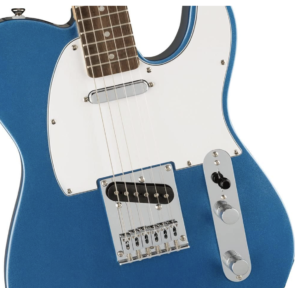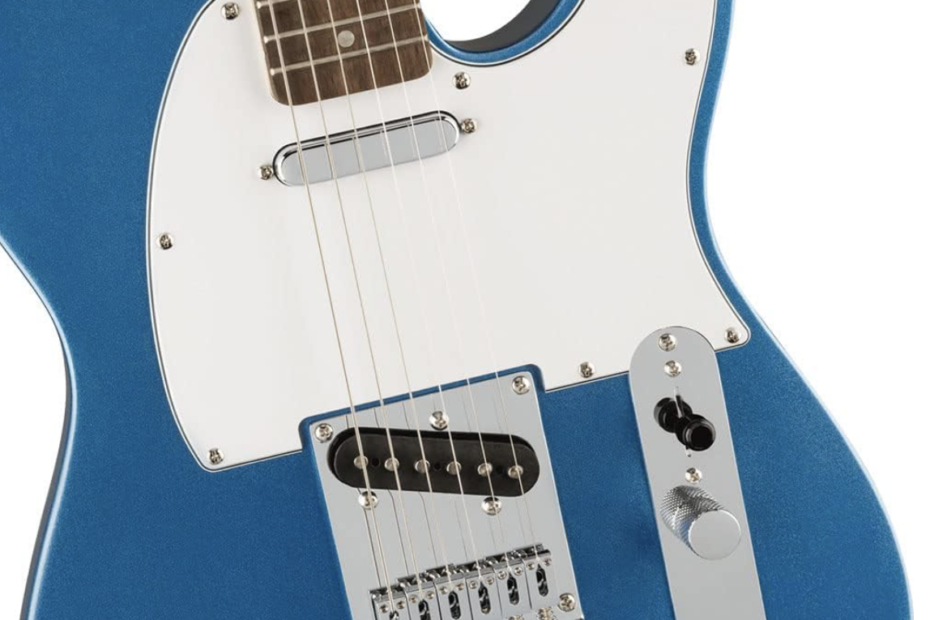 The Squier serial number lookup is a tool or service provided by Squier, a subsidiary of Fender, that allows you to identify and learn more about your Squier guitar or bass. The serial number is a unique identifier assigned to each instrument during the manufacturing process, and it contains valuable information about the instrument’s production date, factory of origin, and sometimes even the model.
The Squier serial number lookup is a tool or service provided by Squier, a subsidiary of Fender, that allows you to identify and learn more about your Squier guitar or bass. The serial number is a unique identifier assigned to each instrument during the manufacturing process, and it contains valuable information about the instrument’s production date, factory of origin, and sometimes even the model.
Find the BEST Online Guitar Lesson Platform in 2025 🎸🔥
Tired of inconsistent YouTube tutorials? GuitarTricks offers 11,000+ structured lessons for all levels. Beginner chords, advanced solos, a step-by-step Core Learning System. Try it risk-free with a 60-day money-back guarantee! 👉 Start Learning Now
To use the Squier serial number lookup, follow these steps:
- Locate the Serial Number: The serial number is usually found on the back of the headstock of the guitar. It may also be located on the neck plate or inside the soundhole of an acoustic guitar. The serial number is typically a combination of letters and numbers.
- Visit the Squier Website: Go to the official Squier website (squier.com).
- Navigate to the Serial Number Lookup: Look for a section or link on the website that says “Serial Number Lookup” or “Serial Number Decoder.” Click on that link to access the lookup tool.
- Enter the Serial Number: Enter the serial number of your Squier guitar into the provided field. Be sure to enter it accurately to get the correct information.
- Retrieve the Information: After entering the serial number, click on the “Submit” or “Search” button. The lookup tool will then process the information and provide you with details about your guitar, such as the production year, factory location, and possibly the guitar model name or series.
- Analyze the Information: Once you have the information, you can analyze it to better understand your guitar’s history and origin. The production year can give you an idea of how old the guitar is, and the factory location can tell you where it was manufactured.
Please note that not all Squier guitars may have a lookup tool, especially older models or certain limited editions. If you can’t find a Squier serial number lookup tool on the official website, you can try reaching out to Squier or Fender customer support for assistance.
Ready to Play Your Squier Like a Pro?
Now that you’ve unlocked your Squier’s serial number secrets, it’s time to unlock your playing potential!
🔥 GuitarTricks.com – 11,000+ lessons for all levels, from beginner chords to advanced solos. Their Core Learning System makes progress easy and fun. Try it risk-free with a 60-day money-back guarantee! Start Now
🎶 PlayGuitar.com – Inexpensive personalized coaching, interactive tabs, and real instructor feedback to fast-track your playing skills. Limited-time discount for new students! Join Today
More Guitar Resources You’ll Love:
Squier Starcaster: Iconic Guitar Shapes
Fender ToneMaster: A Revolution in Amp Tech
Fender Deluxe Telecaster: A Timeless Guitar
Fender CD-60S Acoustic Guitar Review
Using the Squier Serial Number Lookup
 If you own a Squier guitar or bass, you might be curious about its history, production date, and factory of origin. Fortunately, Squier, a subsidiary of Fender, offers a handy tool known as the Squier serial number lookup. This powerful tool allows you to decode the serial number and gain valuable insights into your instrument’s background. In this article, we explore how to use the Squier serial number lookup, its benefits, and what information you can expect to uncover.
If you own a Squier guitar or bass, you might be curious about its history, production date, and factory of origin. Fortunately, Squier, a subsidiary of Fender, offers a handy tool known as the Squier serial number lookup. This powerful tool allows you to decode the serial number and gain valuable insights into your instrument’s background. In this article, we explore how to use the Squier serial number lookup, its benefits, and what information you can expect to uncover.
Understanding the Serial Number: The serial number on your Squier guitar is a unique identifier assigned during its production. Squier’s serial number format has evolved over the years, but it typically consists of letters and numbers. The serial number is usually located on the back of the headstock, the neck plate, or inside the soundhole of an acoustic guitar.
Steps to Accessing the Squier Serial Number Lookup: To begin your search and discovery, visit the official Squier website (squier.com) and look for the “Serial Number Lookup” or “Serial Number Decoder” section. Click on the link to access the lookup tool.
💬 “I went from strumming basics to playing solos in weeks—GuitarTricks changed everything!” – Jake M.
Don’t just own a Squier—master it! 🚀 Click here to start your guitar journey today.
Other Articles:
Squier Affinity Series Deluxe Telecaster
Squier Starcaster: Iconic Guitar Shapes
100 Best Guitar Brands for 2024
Steps to Use the Squier Serial Number Lookup
- Locate the Serial Number: Find the serial number on your Squier guitar or bass and carefully note it down.
- Enter the Serial Number: In the lookup tool, enter the serial number into the provided field. Be precise while entering the characters to ensure accurate results.
- Retrieve the Information: Click on the “Submit” or “Search” button to process the serial number. The lookup tool will then display the results.
 Information Provided by the Squier Serial Number Lookup: Upon successful lookup, you will uncover valuable information about your Squier instrument. Here are some details you can expect:
Information Provided by the Squier Serial Number Lookup: Upon successful lookup, you will uncover valuable information about your Squier instrument. Here are some details you can expect:
- Production Year: The serial number reveals the year your Squier was manufactured. This information can help you determine its age.
- Factory Location: The lookup may also reveal the factory where your instrument was produced. This insight offers a glimpse into its origin.
- Model Information (Sometimes): In some cases, the serial number lookup may provide additional details about the model or series of your Squier guitar.
Benefits of Squier Serial Number Lookup
The Squier serial number lookup offers several valuable benefits for guitar enthusiasts and owners alike:
- Verification: One of the primary benefits of using the service is the ability to verify the authenticity of your Squier guitar or bass. When buying a used instrument, there is always a risk of encountering counterfeit or modified products. By entering the serial number into the lookup tool, you can confirm whether the guitar matches the manufacturer’s specifications and production details, ensuring that you are getting a genuine Squier product.
- Production Year: The lookup provides valuable information about the production year of your Squier instrument. Knowing the exact year your guitar was manufactured can be helpful for collectors, as different production years may have unique features or characteristics. It also allows you to establish the age of your guitar, which can be fascinating for vintage instrument enthusiasts.
- Factory Location: In addition to the production year, the service may reveal the factory where your guitar was manufactured. Different factories may have slight variations in craftsmanship, and this information can add historical value to your guitar. It also offers insight into the global production network of Fender and Squier, showcasing the international presence of these iconic brands.
- Authentication for Resale: If you plan to sell your Squier guitar in the future, having access to its production details and verification through the serial number lookup can enhance its resale value. Potential buyers may be more confident in purchasing a Squier with a well-documented history and authenticity.
- Historical Connection: For many guitar owners, discovering the production details and factory location through the serial number lookup can create a sense of historical connection to their instrument. It allows them to learn about the guitar’s origins, the time it was made, and the craftsmanship behind its construction, fostering a deeper appreciation for the instrument.
- Collectibility: For guitar collectors, owning a Squier with verified production details can enhance its collectible value. Certain production years or factories may be more sought after by collectors, and having this information can make your guitar more desirable within the collector community.
- Educational Value: Using the Squier serial number lookup provides an educational experience for guitar enthusiasts. Learning about the serial number format, production processes, and historical context of Squier guitars can deepen one’s understanding of the brand and its place in the guitar industry.
Want to learn piano but don’t know where to start? 🎹 PianoForAll breaks it down into simple, fun lessons—perfect for beginners! Start today: PianoForAll #LearnPiano #MusicLovers PianoForAll
Frequently Asked Questions (FAQ)
 1. What is the Squier serial number lookup?
1. What is the Squier serial number lookup?
The Squier serial number lookup is an online tool provided by Squier (a Fender subsidiary) that allows you to decode the unique serial number on your Squier guitar or bass. This tool helps you uncover details about your instrument, such as its production year, factory of origin, and sometimes the model name.
2. Where is the serial number located on my Squier guitar?
The serial number is typically found on:
- The back of the headstock
- The neck plate (where the neck attaches to the body)
- Inside the soundhole (for acoustic models)
It usually consists of a combination of letters and numbers.
3. How do I use the Squier serial number lookup tool?
Follow these steps:
- Locate your guitar’s serial number.
- Visit the official Squier website (squier.com).
- Navigate to the “Serial Number Lookup” or “Serial Number Decoder” section.
- Enter the serial number accurately into the tool.
- Click “Submit” or “Search” to retrieve your instrument’s details.
4. What details can I learn from my Squier’s serial number?
The lookup tool provides information such as:
- Production year
- Factory location (e.g., China, Indonesia, or other manufacturing sites)
- Model name or series (in some cases)
5. Are all Squier models supported in the serial number lookup?
Most Squier guitars are supported, but older models, limited editions, or discontinued lines may not appear in the database. If your guitar isn’t recognized, contact Squier/Fender customer support for assistance.
6. What should I do if my serial number isn’t recognized?
If the tool doesn’t recognize your serial number:
- Double-check for typos or formatting errors.
- Contact Squier/Fender customer support via their official website for manual verification.
7. Can the serial number tell me the exact model of my Squier guitar?
In some cases, yes. The lookup tool may specify the model name or series, but this depends on the year and factory. Cross-referencing physical features with Squier’s catalogues can help confirm the model.
8. Is the serial number lookup tool free to use?
Yes, the tool is freely accessible on Squier’s official website. No account or payment is required.
9. How accurate is the information provided by the lookup tool?
The data is generally reliable for instruments produced after the 1990s. However, serial number formats have evolved over time, so older models (pre-2000s) may have less precise details.
10. Can I use the serial number to check if my Squier is authentic?
While the tool confirms production details, inconsistencies in the serial number (e.g., mismatched factory codes or impossible dates) may indicate a counterfeit. For verification, consult an authorized dealer or Squier’s support team.
11. Does the serial number format vary by year or factory?
Yes. Squier’s serial number formats have changed over the years and differ by factory. For example, serials starting with “IC” may indicate Indonesian production, while “CGS” could denote a Chinese factory.
12. What if the Squier website doesn’t have a lookup tool?
If the tool is temporarily unavailable or removed, do the following:

Subscribe to continue reading
Subscribe to get access to the rest of this post and other subscriber-only content.
